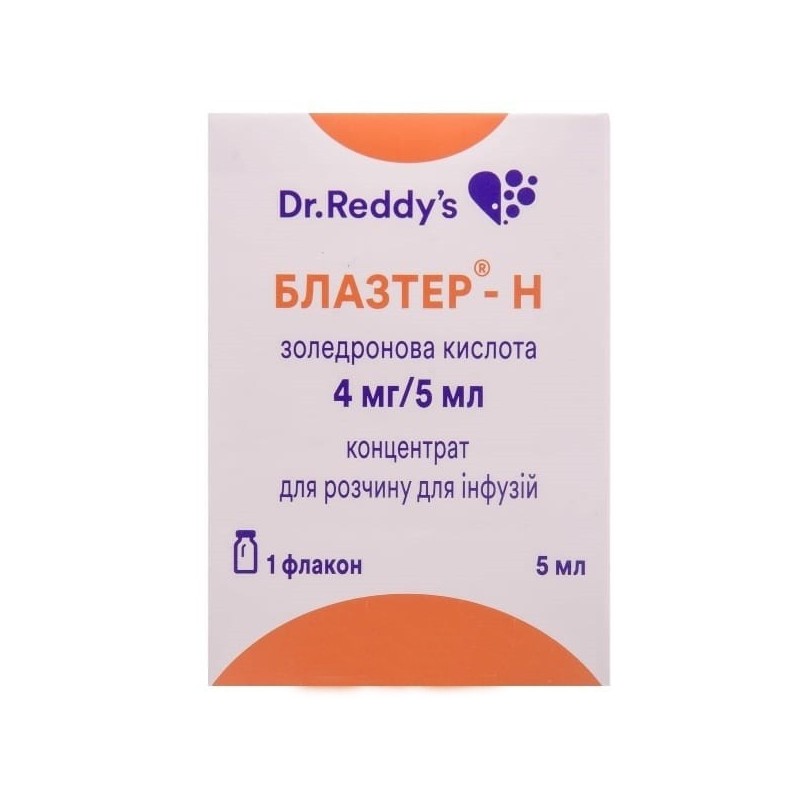



 Secure and encrypted payment processing
Secure and encrypted payment processing We ship to over 40 countries including the USA, UK, Europe, Australia and Japan
We ship to over 40 countries including the USA, UK, Europe, Australia and Japan Guaranteed refund or reship if you haven't received your order
Guaranteed refund or reship if you haven't received your orderConcentrate for Blaster-N infusion solution is indicated for:
Active substance: zoledronic acid;
5 ml of the concentrate contain zoledronic acid monohydrate equivalently - 4 mg of zoledronic acid
1 ml of the concentrate contains - 0.8 mg of anhydrous zoledronic acid;
Excipients: mannitol (E 421), sodium, water for injection.
Hypersensitivity to the active substance (zoledronic acid), other bisphosphonates or any auxiliary substances that make up the drug.
Pregnancy or lactation.
Blaster®-N should only be administered by doctors who have experience administering bisphosphonates.
Before administration, 4 mg of Blaster®-N concentrate is diluted in 100 ml of 0.9% sodium chloride solution or 5% glucose solution. The finished solution for infusion is administered as a single infusion for at least 15 minutes.
Blaster®-H concentrate cannot be mixed with infusion solutions containing calcium or other divalent cations, such as Ringer’s lactate solution, and must be administered as a single infusion using a separate infusion system.
Contraindicated.
Contraindicated.
Carefully.
Clinical experience with acute overdose therapy is limited. An erroneous use of zoledronic acid at a dose of 48 mg has been reported. Patients who have applied a dose exceeding the recommended dose should be constantly monitored, since impaired renal function (including renal failure), changes in the electrolyte composition of serum (including concentrations of calcium, phosphate and magnesium) are possible. When hypocalcemia occurs, an infusion of calcium gluconate is indicated for clinical indications. The treatment is symptomatic.
General disorders and reactions at the injection site: often - fever, flu-like condition (including fatigue, chills, malaise and hot flashes); sometimes - reactions at the injection site (including pain, irritation, swelling, hardening), asthenia, peripheral edema, chest pain , weight gain, anaphylactic reactions / shock, urticaria, rarely - arthritis and swelling of the joints as symptoms of an acute phase reaction.
No clinically significant interactions with the simultaneous use of zoledronic acid and other drugs, such as anticancer drugs, diuretics, antibiotics, analgesics, were noted.
Keep out of reach of children in the original packaging at a temperature not exceeding 30 ° C.
After dilution in a sterile 0.9% sodium chloride solution or 5% glucose solution, the drug is stable for 24 hours at a storage temperature of 2-8 ° C.
After aseptic dilution, it is necessary to use the finished drug immediately.
Shelf life is 3 years.